By Currents Of Change
Avondale Mills has become an institution in the textile industry, with a history spanning more
than 150 years. By the turn of the 20th century, as the South finally emerged from
reconstruction into the broad daylight of industrialization, a trio of companies had begun
operations in Alabama, Georgia and South Carolina. Avondale Mills, Walton and Monroe Mills and the
Graniteville Company, much like the three Fates of Greek mythology, were spinning and weaving
parallel threads of production, expansion and employee self-improvement in the early 1900s.A rich
heritage developed for all three companies over the ensuing century, one that was similar in its
focus on quality, value and opportunity. By the end of the 20th century, the companies, like the
fabrics they produced, had finally intertwined to form a cohesive whole.
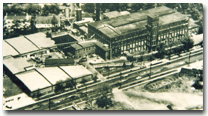
The Birmingham Plant of Avondale Mills in 1897.

The original Monroe Mill in 1895.
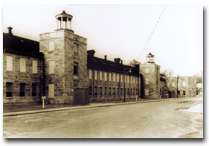
The orginal Granite Plant, built in 1845. The formation of Avondale Mills, Inc., brought
with it the illustrious more-than-150-year history of these Southern companies, and it is from them
that the company takes its motto today: to develop partnerships through relationships, information
and product with its suppliers, associates and customers which create value and the opportunity for
each to grow and profit.Today, Avondale is one of the nations largest producers of utility-wear
fabrics, denim and sales yarn; and one of the largest consumers of cotton. With sales in excess of
$600 million, and more than 5,600 associates working in 20 plants in four Southeastern states and
15 sales offices across the globe, Avondale Mills continues the heritage of innovation that was
begun more than a century ago.How It All Began

The Graniteville Company was founded by William Gregg in 1845 in the Horse Creek Valley area
of South Carolina, producing fabric from locally grown cotton. Monroe Cotton Mill first opened
its doors in 1895, producing greige goods. The original directors included George Felker,
great-grandfather to Avondales current Chairman, President, and CEO, G. Stephen Felker.


The first Avondale plant opened in 1897 near the Avondale community of Birmingham, Ala., and
produced greige goods. Braxton Bragg Comer was the companys first president, later serving as
governor of Alabama and a U.S. senator.Walton Cotton Mill Co. began operations at the turn of the
century, opening its doors in 1901. It manufactured greige goods, and also was led by
Felker. The Early YearsWilliam Gregg chose to build the first Granite Mill from the areas
native blue granite, thus giving the mill, and later the town, their names. A strong proponent of
development in the South, Gregg believed that opening the mill would advance industrialization in
the area. He expanded production in 1880 and 1900, building two more mills. Granitevilles
founder would be pleased to know that Gregg Plant, which was named for him, is the largest
finishing plant in the world today.
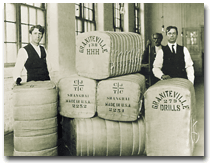
Graniteville’s cotton fabrics were internationally acclaimed, even at the turn of the 20th
century. Walton and Monroe Mills, both built in Monroe, Ga., on opposite sides of the same
street, had their roots in the same investors. The original directors of the Monroe Mill and
original petitioners for the formation of the Walton Cotton Mill Co. included Billington Sanders
Walker, president of Monroe Mill; George W. Felker; Henry D. McDaniel; Coleman T. Mobley; and
George C. Selman.It was the common Board of Directors that allowed Walton Mill and Monroe Mill to
operate side-by-side as sister companies, becoming synonymous with each other over the years.By
1906, Walton Monroe had doubled in size. The companies were able to stay on top with investments in
current technology, again doubling in size in 1923.Avondale Mills had no less of an impressive
start, one that had its beginnings in the faith of its machinery suppliers, who accepted company
stock for the value of their machinery when Northern investors pulled out before the mill was
completed.The company again relied on faith to remain solvent in 1913. It asked company
stockholders to subscribe $250,000 and issued a large block of preferred stock, which later was
redeemed. This was the only time that additional stock had to be issued.Avondale shook off its
financial woes and, like Walton Monroe, prospered. Between 1917 and 1921, the company built six
mills in the South, and increased the number to 10 by 1933.The year 1921 saw the advent of
Avondales first annual inspection tour, a forerunner to Avondales current Zero Defects (ZD) program
and facility-auditing program. ZD recognizes associate dedication and encourages communication
between employer and associate for the improvement of the company.The annual inspection tour was,
at first, a small, businessmen-only event that was arranged to encourage associates to take pride
in their work and in the plant as a whole.In typical Avondale style, the tours turned into
something far grander and more meaningful, with community leaders, customers and friends of the
company tagging along for the inspections, which were followed by full-scale banquets at the mill.
Associates came to take such pride in their work that they began to decorate their workstations
with flowers from their own gardens. On The Home Front
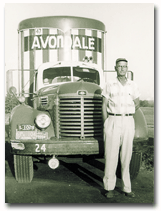
The onslaught of World War II forced the textile industry into the war effort. Avondale,
Graniteville and Walton Monroe jumped into the cause, continuing the similar pace they had kept up
during the first part of the century.Items made for the war effort included: woolen blankets for
the Army; knitted yarns for the manufacture of Army and Navy undershirts, underwear and socks;
camouflage nets; herringbone twills used in fatigue uniforms for both training and actual combat;
tent fabrics; sanforized drills for trouser pocketings and waist bands; wide and narrow tickings
and linings for military mattresses and mattress covers; and seersuckers for service hospitals
throughout the nation.Avondale was twice awarded the Army-Navy E Flag for outstanding production of
quality products delivered on a timely basis during the war effort. A Time Of ProsperityThe
last half of the century saw the three companies grow with the post-war economic boom.High-profile
advertising campaigns during this time gave Avondale a greater presence within the textile
industry, and showed both its customers and its associates that it was at the forefront of the
industry.Avondales most expansive campaign came in 1947 in the Saturday Evening Post. A monthly
series of full-page advertisements depicted Avondale associates and their families in paintings by
Douglass Crockwell.
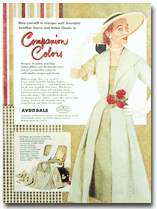
The Companion Colors campaign came three years later. It was another series of nationwide
advertisements that ran in such publications as Ladies Home Journal, Vogue, McCalls and Good
Housekeeping, among others.Around the same time, Avondale, Graniteville and Walton Monroe made
improvements to almost all of their plants. Investments were made in technological advancements,
such as new opening equipment, combers, magic eye doors, lighting systems and continuous overhead
cleaning devices. Central air conditioning, however, didnt come until 1963, when the Walton plant
was among the first to receive this luxury.The trios ability to weather the storms of war and
unstable economic times enabled all three to expand their operations, as well as upgrade them. More
than 17 plants were either bought or built by Avondale, Graniteville and Walton Monroe between 1961
and 1994.Running on what seemed like parallel currents in the same river, the three companies
flowed closer and closer together as the 20th century came to a close.Walton and Monroe officially
merged in 1968 to become Walton Monroe Mills, Inc. In 1975, Avondale Mills acquired Cowikee Mills,
an Alabama company founded in 1888 and, since 1913, also owned by the Comer family.The currents
rushed even closer together in 1986, with the purchase of Avondale by Walton Monroe Mills, Inc. The
two companies operated separately, but were managed by the same Board of Directors.In 1993, the two
finally merged, taking the name Avondale Incorporated. Avondale Mills, Inc., now operates as a
wholly owned subsidiary of Avondale Incorporated.Three years later, Avondale acquired the textile
assets of the Graniteville Company, adding five more plants to the Avondale family. Just The
BeginningThe textile industry has seen many companies washed away by the overwhelming forces of
economic instability and change in product demand. It is rare to see a manufacturing operation that
has weathered so many storms still standing strong after more than a century and a half. But, it is
this steadfastness in inclement times that makes Avondale stand out. It is because of the companys
long history of unity and commitment that its future remains promising.Our rich history has
culminated in a corporate culture that demands excellence from each of our associates, said G.
Stephen Felker. This culture permeates and thus vivifies our entire enterprise.The story of
Avondales road to prosperity may seem a little complicated, but mergers and acquisitions by
companies with similar investors, work ethics, dedication to product advancements and concerns
about employee welfare helped the individual companies become the success that Avondale is today.
June 2002




